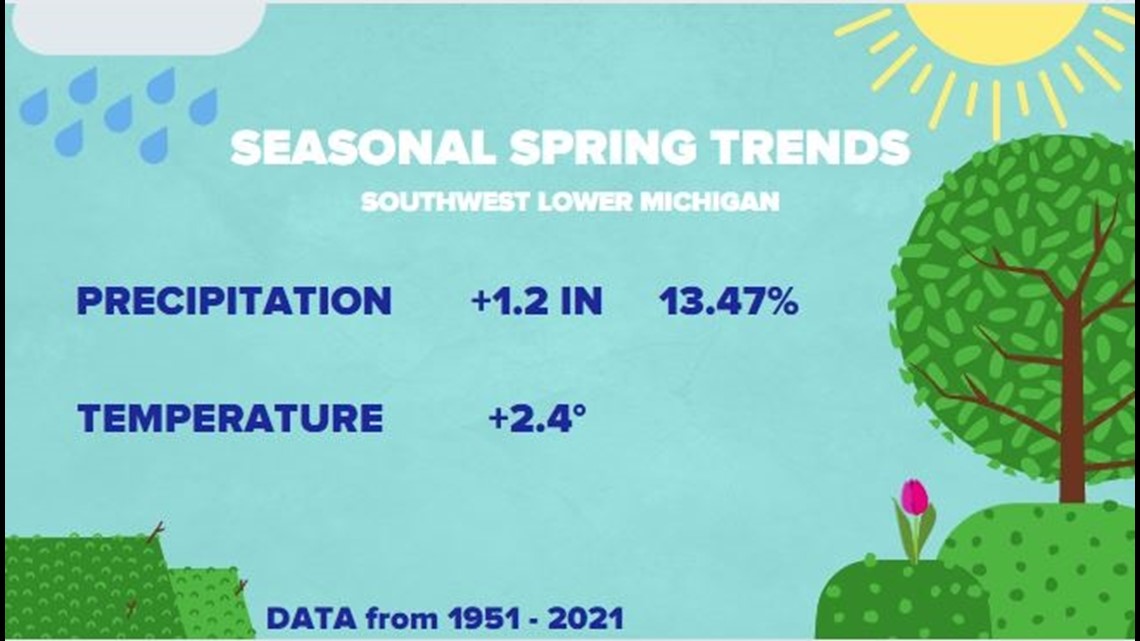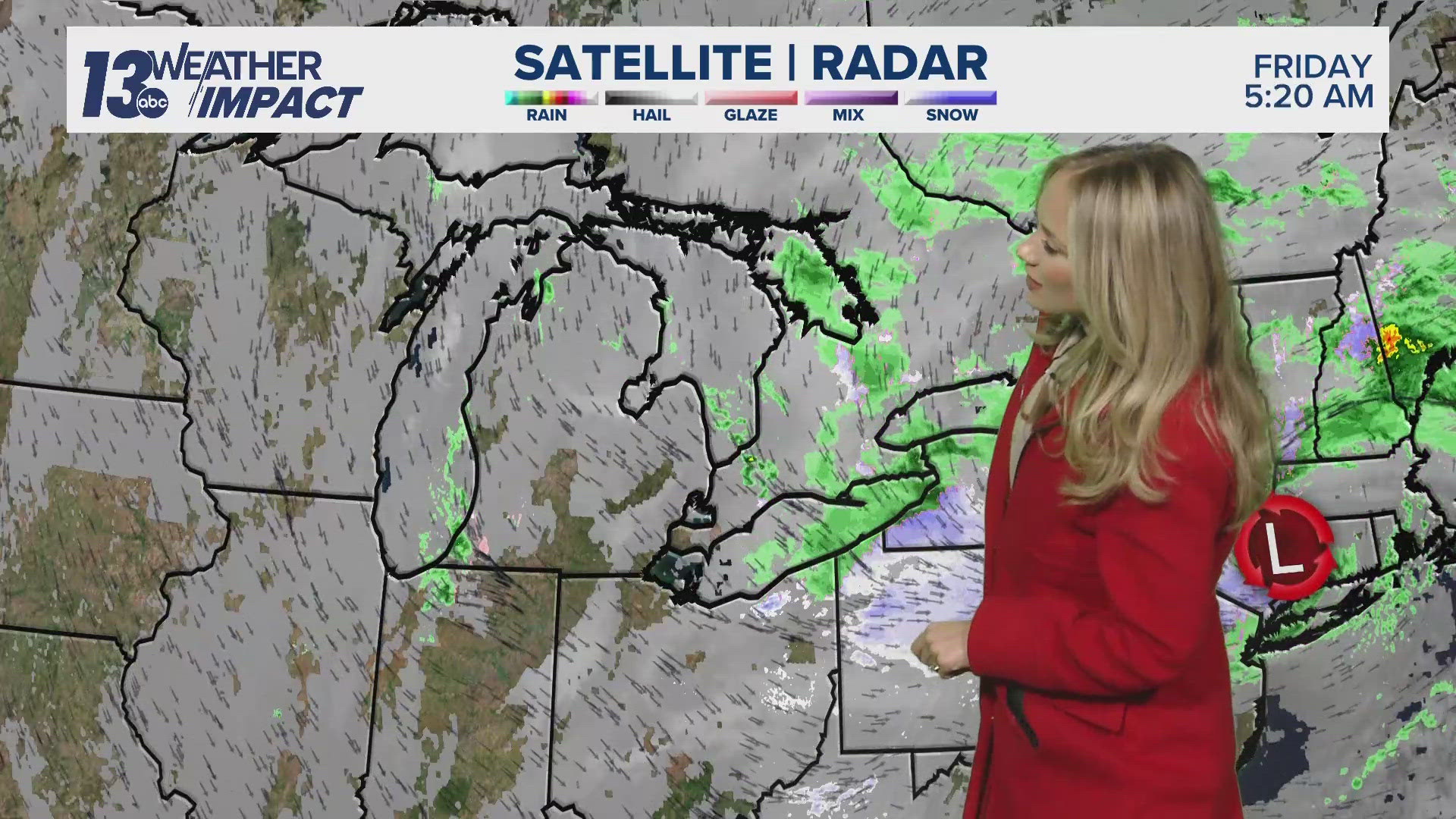MICHIGAN, USA — In just the blink of an eye, tulips turn from green stems to bright, beautiful flowers. But what role does our ever-changing climate have in tulip development? That was the question I sought to answer.
I began my research with Parks and Recreation Director for the City of Holland, Andy Kenyon. Kenyon explained that tulips are planted at the same time every year and that the weather depicts when they will bloom.
Tulips are known for blooming in late spring, but weather trends over a long period—known as climate—have been changing.
Elena Lioubimtseva, Professor of Geography and Sustainable Planning at Grand Valley State University, explained that we see the most change to our climate during spring. The largest change, increased precipitation, can be attributed to our proximity to the Great Lakes and the overall increase in temperature of our atmosphere.
Since 1951, there has been a 13.47% increase in seasonal precipitation in the spring in southwest lower Michigan. This is in large part due to increased amounts of CO2 in the atmosphere, which causes our atmosphere to warm. This was something noticed by Tulip Time officials back in 2001.


"Historically, that's a little bit before my time, but reading some documents from before, they did move it up a week just because of the fear of the weather," said Kenyon. "With the change in the temperature, the warmer it got in the spring, the thought was, the quicker the tulips would bloom."
This change has helped us adapt to our changing climate most years.
"We've only had one year in the 21 years that I've been doing this that we have not had any blooms during the festival. That was in 2012," said Kenyon.
In March of 2012, West Michigan snapped out of winter quickly. This sent our tulips into early bloom, causing the legendary “stemfest”. If climate trends continue the way they are, we could see early blooms happen more often, making pinpointing the timing of bloom more difficult.


So, there are two main ways that climate is impacting Tulip Time:
1. The crop itself—In this case, the timing of when they bloom.
2. Hospitality and tourism—This is because our springs are becoming rainy and cloudy. A difficult obstacle that event planners will have to deal with.
But thankfully, our tulips will bloom.
"Of course, we can still grow tulips, until the end of the world, even under the worst climate change scenario," explained Lioubimtseva.
It’s just with our climate becoming warmer, wetter and more erratic, it may be more difficult to pinpoint when and you may have to enjoy looking at them more often with an umbrella.
►Make it easy to keep up to date with more stories like this. Download the 13 ON YOUR SIDE app now.
Have a news tip? Email news@13onyourside.com, visit our Facebook page or Twitter. Subscribe to our YouTube channel.



